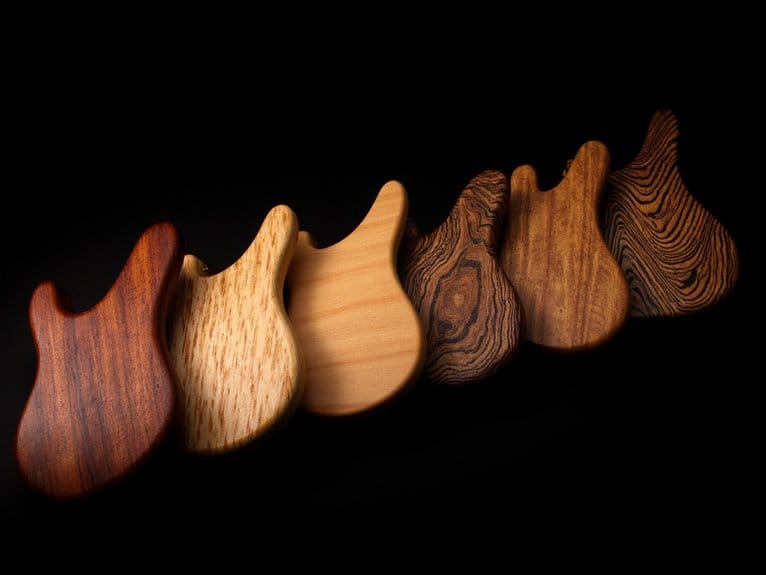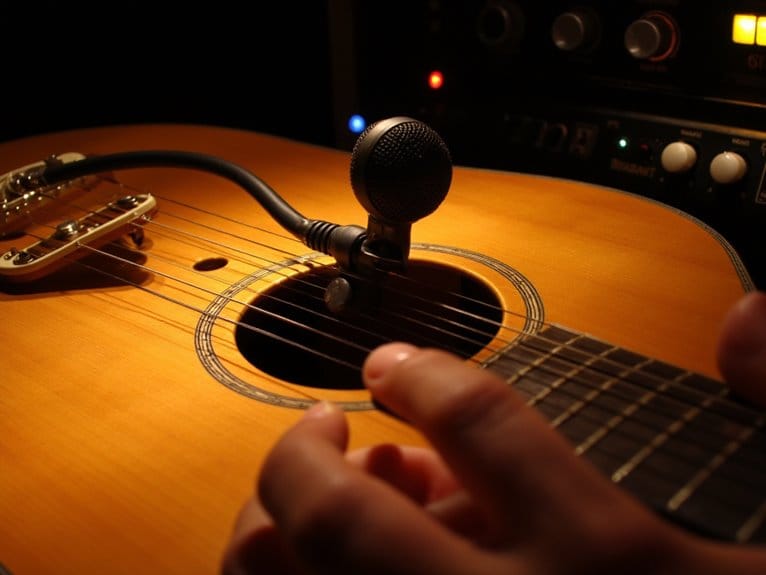Advanced Reverb Routing: Creating Depth and Space
You’ll achieve professional spatial depth by routing reverb through dedicated send buses rather than individual track inserts, allowing precise control over wet/dry blending and CPU efficiency. Create submix groups—rhythm, harmonic, vocal, and ambient—each feeding specialized reverb sends with tailored parameters like decay time and pre-delay. Automate send levels and reverb parameters dynamically throughout your song, while using sidechain compression to duck reverb during peak signals, preventing muddy mixes and maintaining clarity that separates amateur from professional productions.
We are supported by our audience. When you purchase through links on our site, we may earn an affiliate commission, at no extra cost for you. Learn more.
Notable Insights
- Route vocals to reverb send buses to create signal copies for wet/dry blending while preserving original clarity.
- Automate reverb decay times and pre-delay parameters to create evolving soundscapes that expand choruses and tighten verses.
- Use parallel processing with frequency-specific filtering to prevent muddiness while maintaining spatial depth and dimension.
- Group instruments functionally into submixes with tailored reverb treatments for rhythm, harmony, vocals, and ambient elements.
- Implement sidechain compression to duck reverb levels during peak signals, maintaining dynamic clarity and preventing wash-out.
Bus Configuration and Signal Flow Fundamentals
While many producers get intimidated by bus routing, I’ve found that understanding these fundamental pathways transforms your mixing workflow from chaotic to controlled, giving you the precision needed for professional-sounding tracks.
You’ll encounter three primary bus types: send buses that duplicate your source signals for parallel processing, group buses that consolidate multiple tracks for collective control, and the master bus that handles your final output.
The beauty lies in how these signal paths interact—when you route vocals to a reverb send bus, you’re creating a copy that processes through effects while your original signal remains untouched.
Bus routing creates parallel signal paths that preserve your original audio while adding processed effects—the foundation of professional mixing control.
This parallel approach lets you blend dry and wet signals precisely, establishing the spatial foundation that separates amateur mixes from professional productions.
Professional audio interfaces with zero-latency monitoring enable efficient bus routing workflows by allowing real-time signal processing without the delays that can disrupt your creative flow. Modern interfaces using ASIO drivers deliver superior performance for complex routing setups, ensuring your signal paths maintain clarity throughout the mixing process.
Dynamic Automation Techniques for Spatial Control
Once you’ve established your bus routing foundation, the real magic happens when you start automating reverb parameters throughout your track.
This transforms static spatial environments into dynamic, breathing soundscapes that evolve with your music’s emotional arc.
Dynamic reverb manipulation becomes your secret weapon for spatial dimension enhancement, allowing you to craft immersive experiences that pull listeners deeper into your mix.
I’ve found that strategic parameter automation creates movement that feels natural rather than mechanical.
Essential automation techniques include:
- Decay time modulation during shifts to expand choruses and tighten verses
- Pre-delay adjustments that separate elements without volume changes
- Send level automation for individual tracks to control spatial positioning
- High-frequency damping control to simulate distance changes dynamically
These techniques transform your reverb from simple ambience into an active compositional element.
Parallel Processing and Sidechain Integration Methods
Automation sets the stage beautifully, but parallel processing takes your reverb game to an entirely different level by splitting signals into multiple paths that can be processed independently before blending back together.
You’ll create aux sends feeding dedicated reverb returns, allowing you to blend wet and dry signals without compromising the original source’s presence.
I often split these chains across frequency bands, applying low-pass filtering to reverb sends to prevent muddiness while high-pass filtering removes unwanted low-end buildup.
Sidechain compression becomes your secret weapon here, ducking reverb levels when the dry signal peaks, maintaining dynamic clarity during vocal passages or instrumental solos.
Sidechain compression ducks reverb when dry signals peak, preserving clarity and preventing that washed-out sound during crucial musical moments.
This approach prevents the washed-out sound that plagues many mixes while preserving spatial depth.
Submix Grouping Strategies for Cohesive Depth
Three strategic approaches to submix grouping will fundamentally transform how you achieve cohesive depth across your entire mix, moving beyond track-by-track processing into organized buses that share spatial characteristics and processing chains.
Functional grouping categorizes instruments by their role—percussion for propulsion, bass for anchoring, harmonics for support—rather than frequency range, enabling precise spatial clarity through tailored reverb settings. This approach delivers superior mix cohesion because grouped elements share common reverberation characteristics, creating unified sound layering that feels naturally connected.
Here’s how I organize submix buses for maximum depth control:
- Rhythm submix – Drums, percussion, and bass with tight reverbs for foundational punch
- Harmonic submix – Guitars, keys, and strings with moderate spatial processing
- Vocal submix – Lead and backing vocals with dedicated clarity-focused reverbs
- Ambient submix – Pads and effects with diffuse, dimensional processing
CPU Optimization and Advanced Workflow Management
While submix grouping creates the foundation for professional spatial depth, your CPU’s processing power determines whether you’ll actually hear those carefully crafted reverb chains without dropouts, glitches, or that dreaded audio engine overload message that kills your creative momentum.
I’ve learned that CPU efficiency strategies start with smart buffer size management—you’ll want smaller buffers (128 samples) during tracking for minimal latency, then larger buffers (512-1024 samples) during mixing when those complex reverb algorithms demand processing headroom.
Audio processing optimization becomes essential when you’re running multiple convolution reverbs simultaneously. Instead of loading identical reverb plugins across tracks, route multiple channels to aux sends where single reverb instances handle the spatial processing, dramatically reducing CPU load while maintaining that lush, dimensional sound you’re after.
On a final note
You’ve now mastered the essential routing techniques that’ll transform your mixes from flat to dimensional. By implementing strategic bus configurations, dynamic automation curves, and parallel processing chains, you’re creating professional-grade spatial environments that rival commercial productions. Remember, these methods work best when applied subtly—I’ve learned that restraint often yields the most convincing results. Your CPU optimization strategies will keep sessions running smoothly while maintaining that coveted three-dimensional soundscape you’re after.







